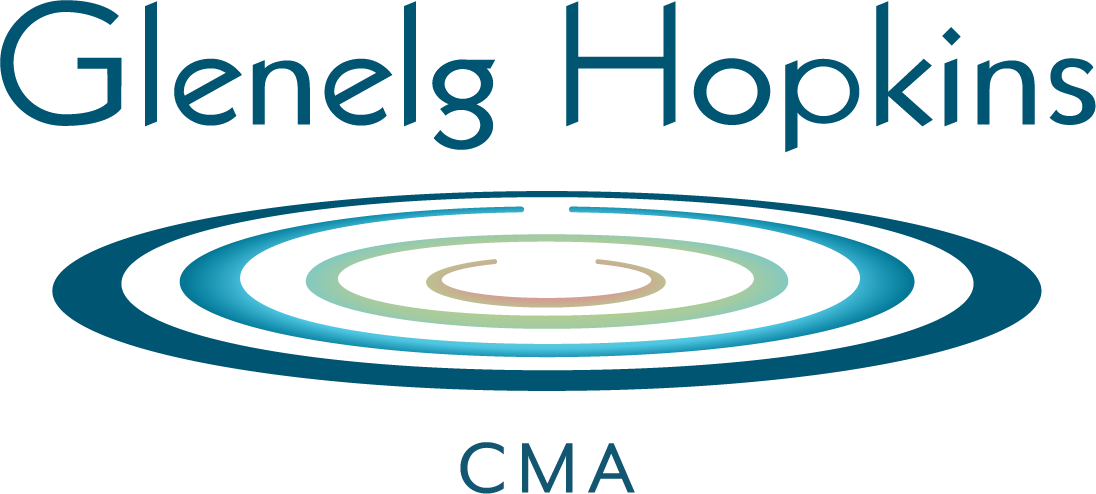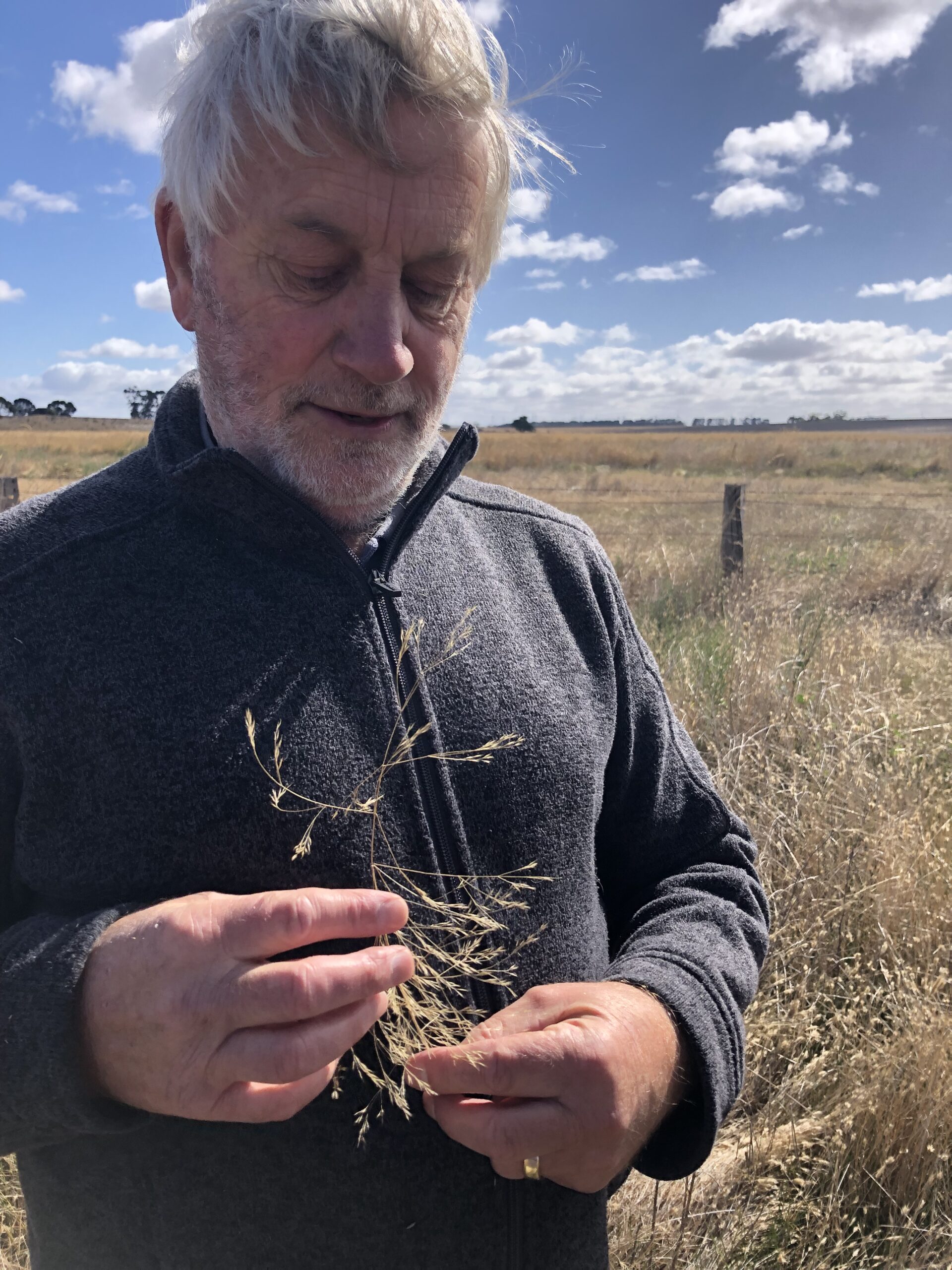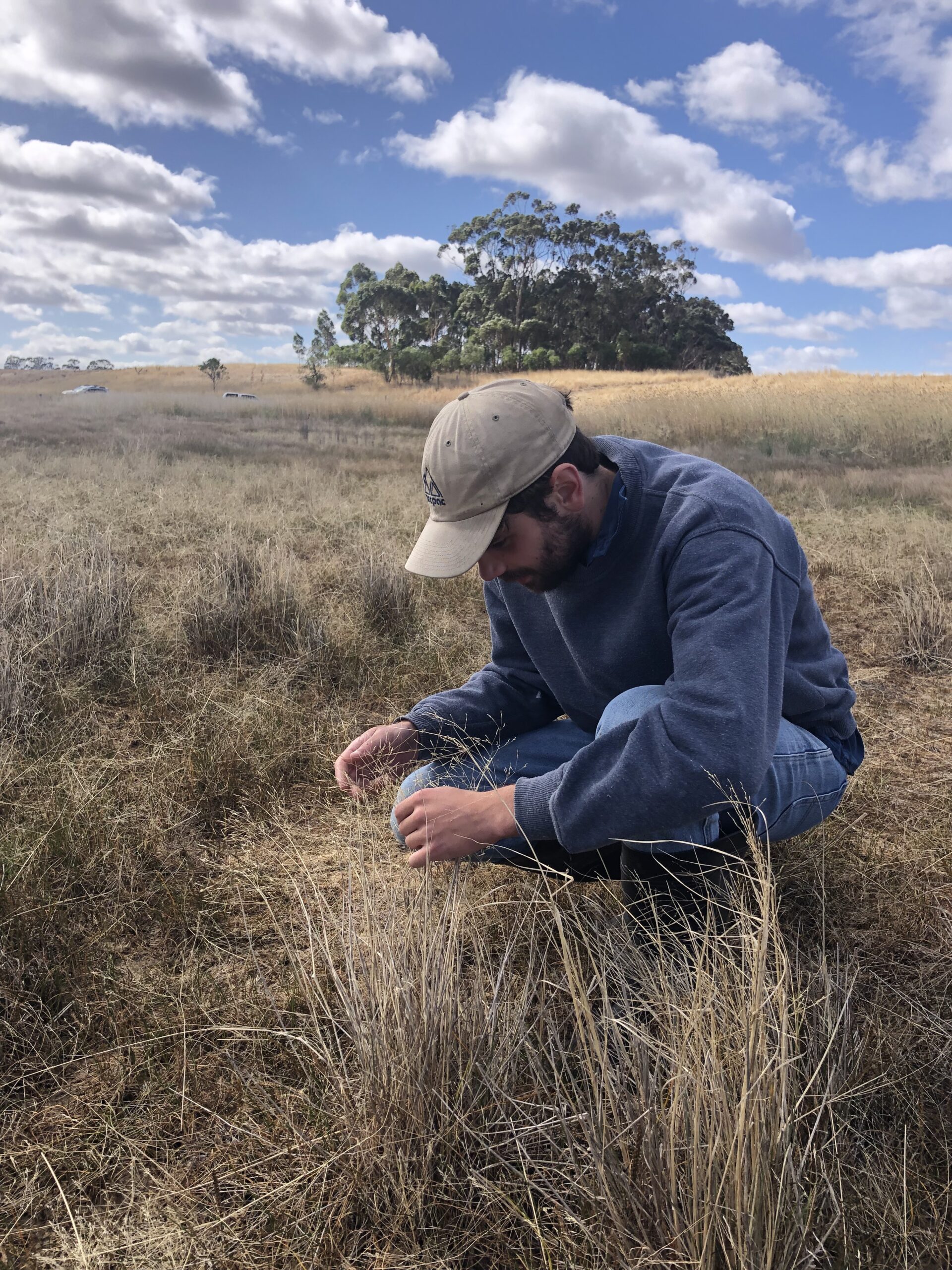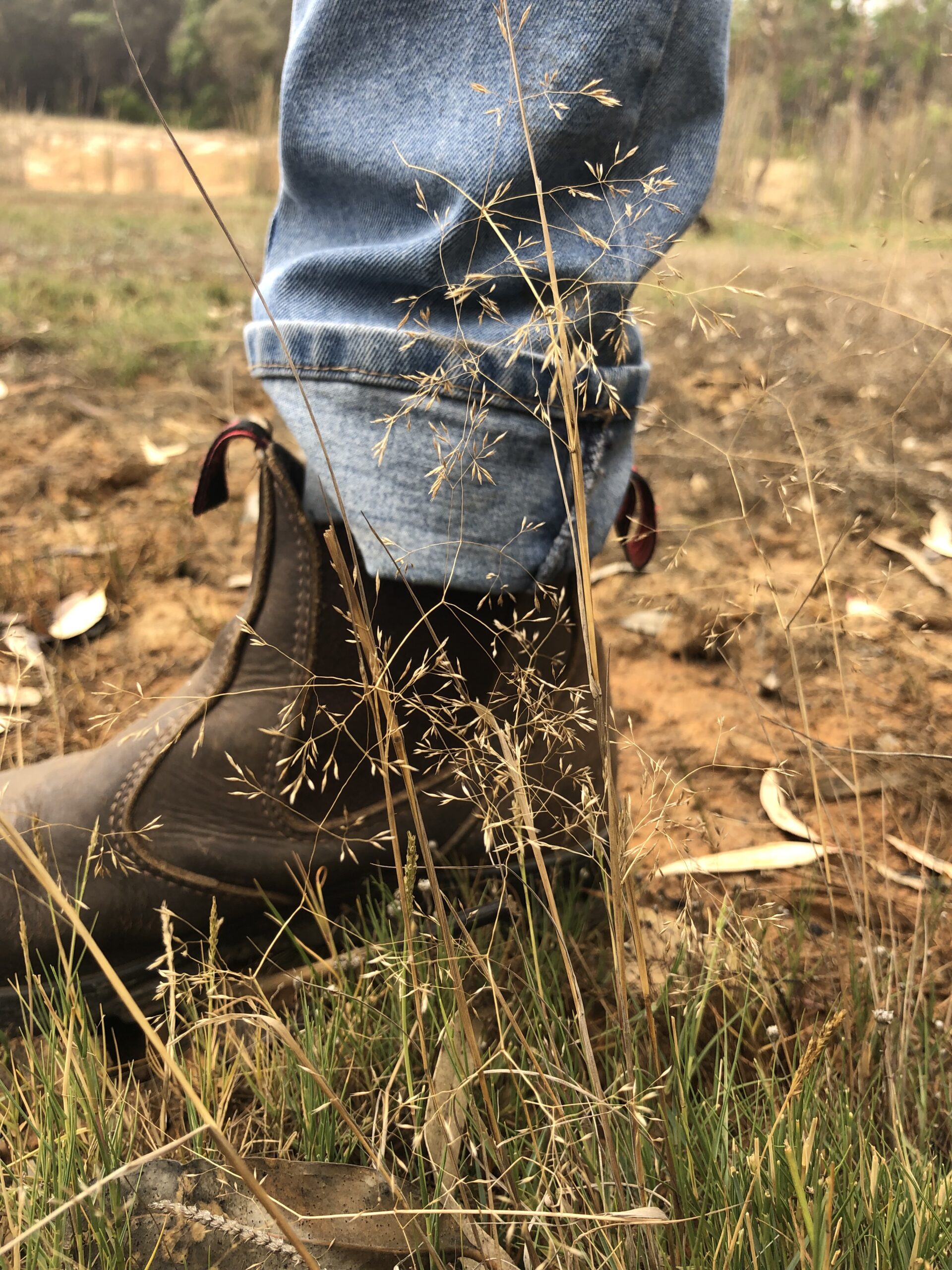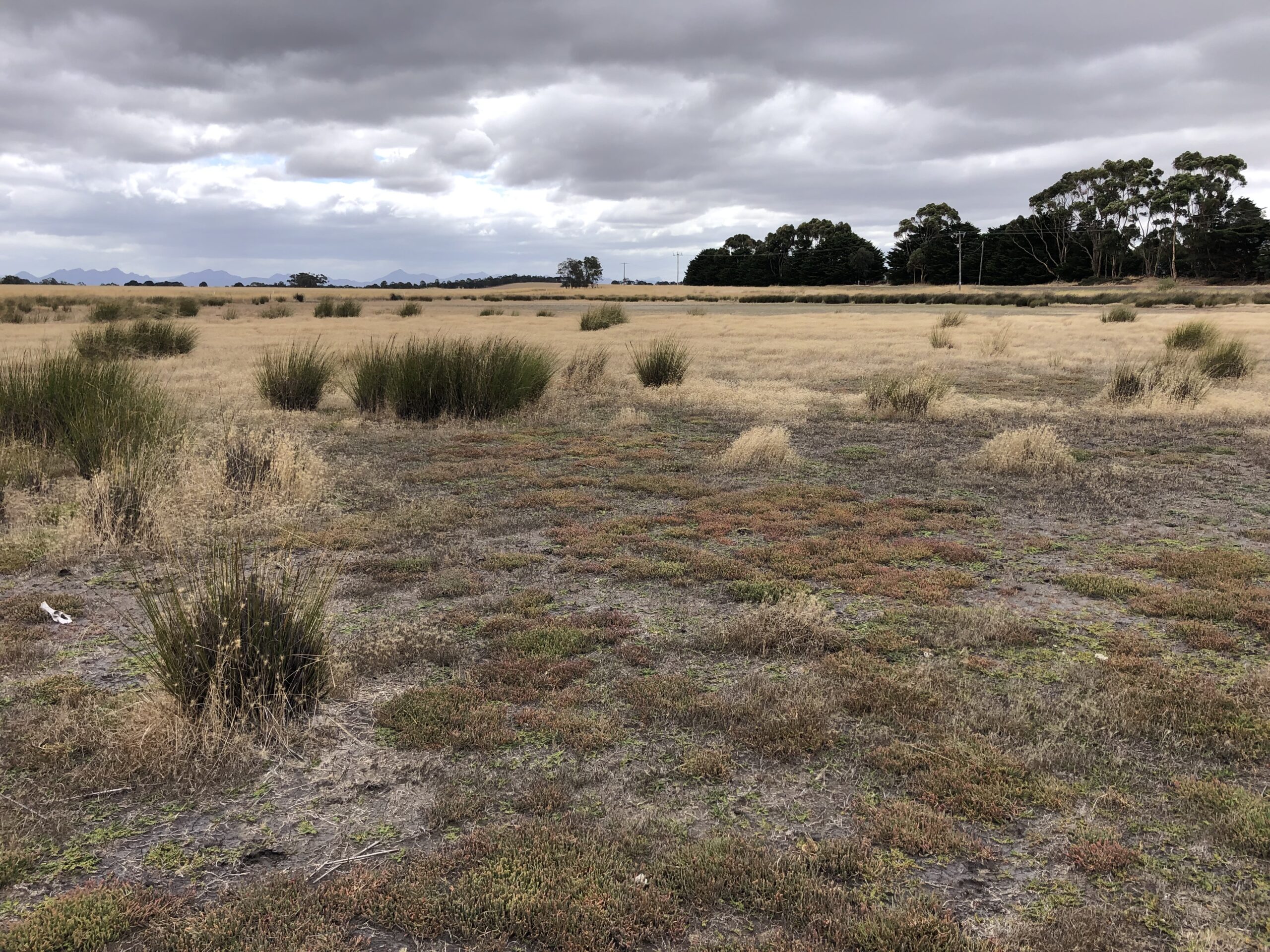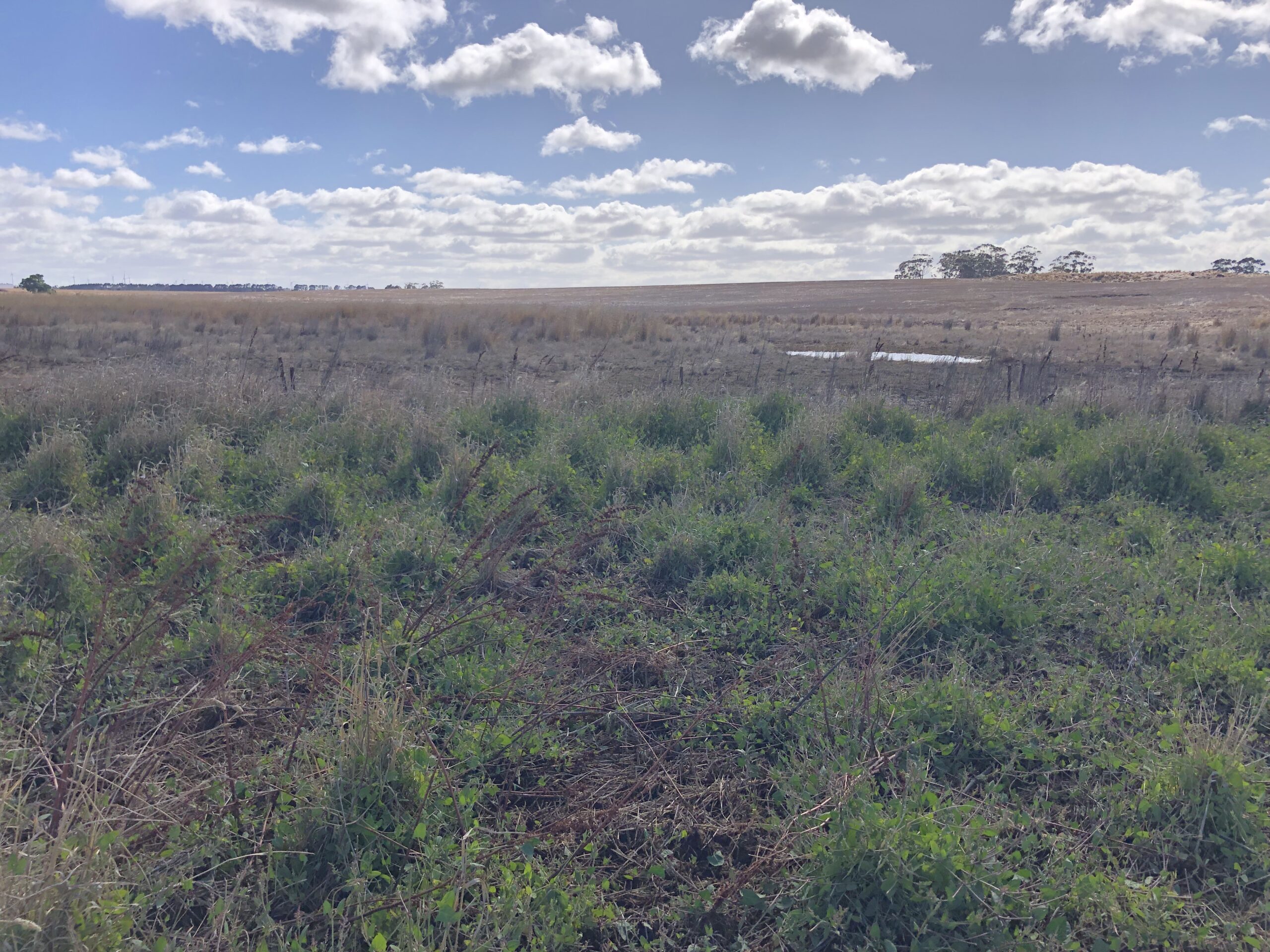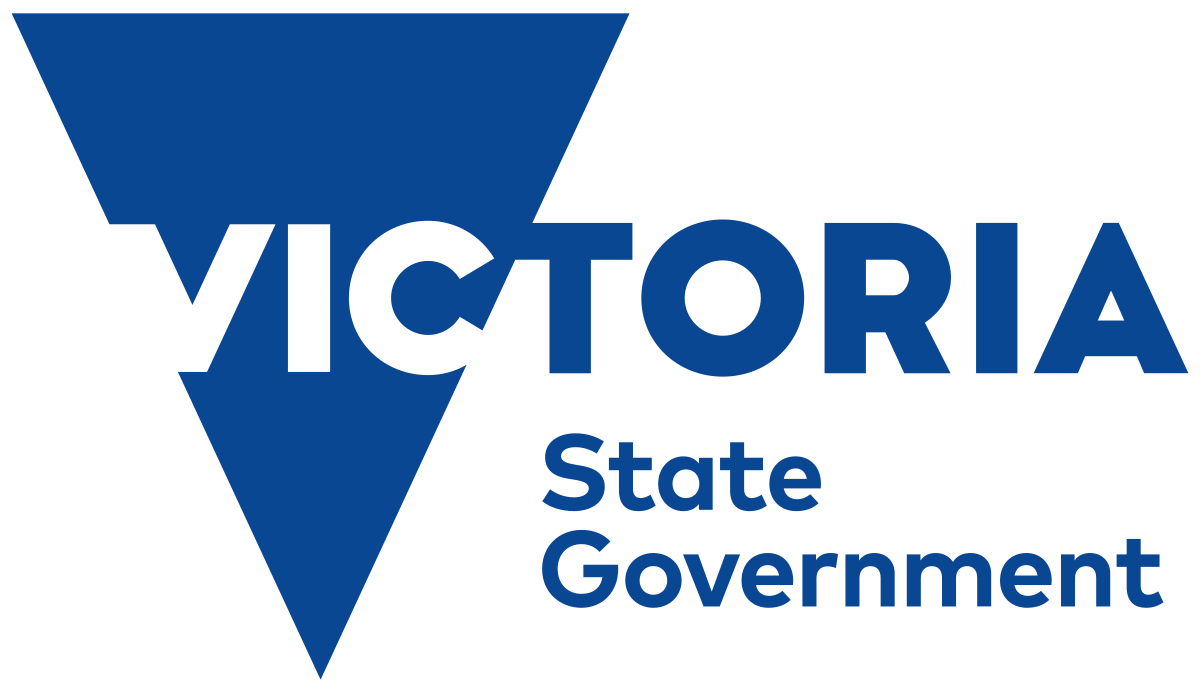Adamson’s Blown-grass
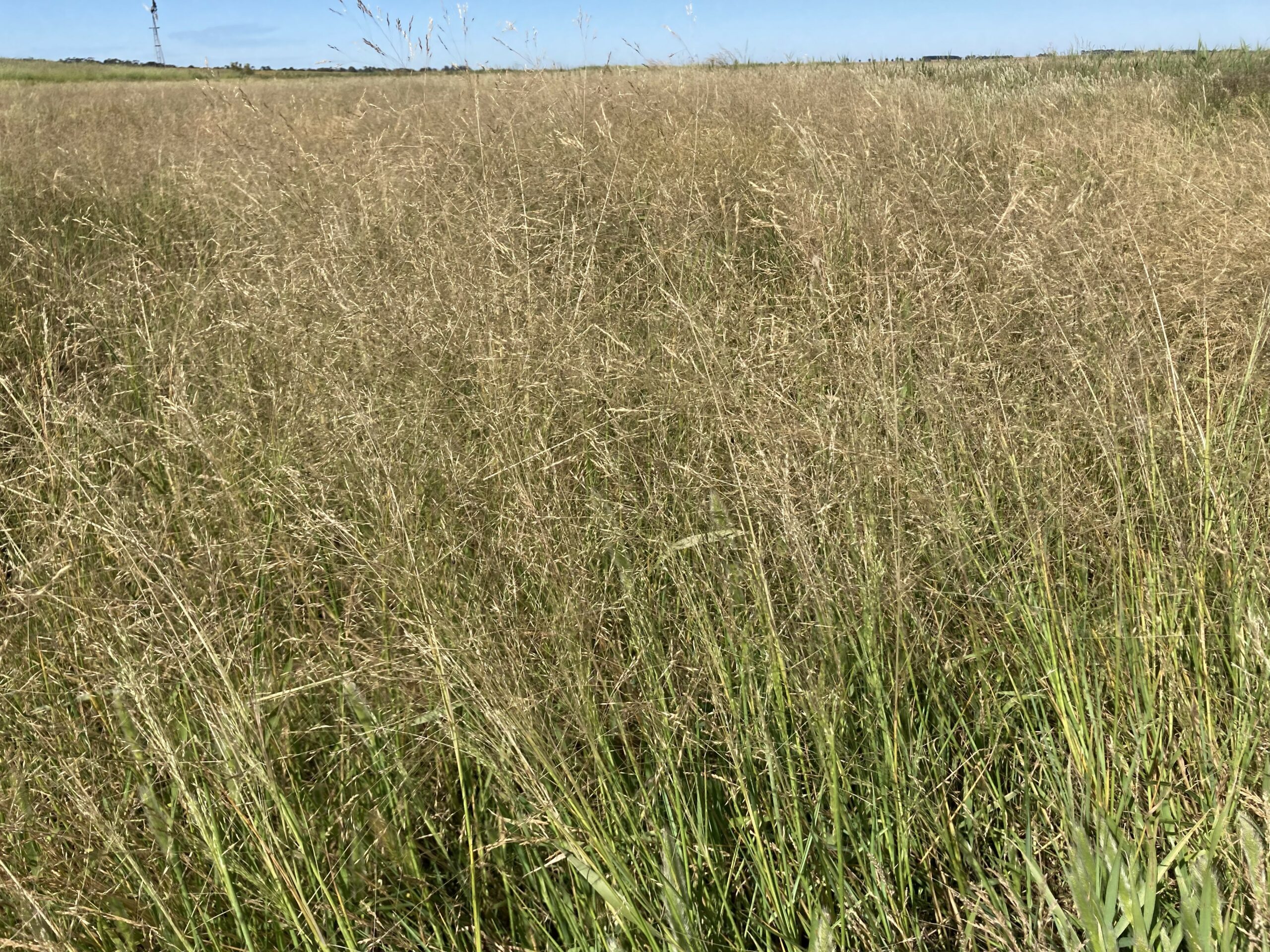
What is Adamsons Blown-grass?
Lachnagrostis adamsonii
A saline-loving perennial endemic to areas on the Victoria Volcanic Plains
Project: $250,000 over 13 months
Funding partner: Australian Government under the Environmental Restoration Fund Threatened Species Strategy Action Plan, Priority Species Grants.
Delivery partners: Royal Botanic Gardens Victoria.
What is Adamson’s Blown-grass?
Adamson’s Blown-grass (Lachnagrostis adamsonii) is a tufted, short-lived perennial grass endemic to south-western Victoria, where it grows adjacent to saline wetlands and watercourses.
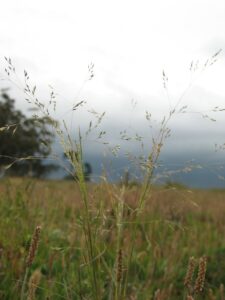
IMAGE: Austin Brown
The species was known from about 70 locations, but has declined or been lost from many of these in recent years. Major threats to remaining populations include drought, weed invasion, changed hydrology from tree plantations, grazing and disturbance from ploughing/cropping and road maintenance.
Lachnagrostis adamsonii is listed as Endangered under the Commonwealth Environment Protection and Biodiversity Conservation Act 1999 and as Threatened under the Victorian Flora and Fauna Guarantee Act 1988 (FFG Act). The first recovery plan for L. adamsonii was developed in 2010.
Species information
Description
Adamson’s Blown-grass (Lachnagrostis adamsonii) (formerly known as Agrostis adamsonii) is a grass
of the Family Poaceae growing to 70 cm in height and forms delicate, open inflorescences up to 25 cm
in length that remain partly enclosed by the upper leaf sheath until late maturity, often drying to a pale
golden colour.
Leaves grow to 25 cm long and 3.5 mm wide but are often folded or inrolled. The light green or occasionally purple-tinged spikelets are 3–4 mm in length, the upper glume longer than the
lower glume. Lemmas are awned from near the apex, the fine awn being straight or gently curved and
0.5–1.5 times the length of the lemma (description from Walsh & Entwistle 1994; Brown 2006).
Distribution
Lachnagrostis adamsonii is endemic to south-western Victoria, where it occurs across an area of
about 15,000 km2, from Clifton Springs near Geelong to near Coleraine (Walsh & Entwistle 1994), in the Victorian Volcanic Plains and Victorian Midlands IBRA bioregion (sensu DEH 2000).
Lachnagrostis adamsonii occurs along slow moving creeks, depressions and drainage lines that are
seasonally inundated or waterlogged and usually moderately to highly saline, growing on black,
cracking clays or duplex soils with poorly permeable subsoils ranging from acidic (pH 4.6) to alkaline
(pH 9.1) (Brown 1997).
Plants appear to favour sites that have some shelter from the wind (often provided by other indigenous and exotic plants species). This preference for protected sites may explain why plants are rarely found around larger, more open, exposed saline lakes.
What is this project all about?
The highest concentrations of remaining populations of L.adamsonii are in the Glenelg Hopkins region of Victoria, on roadsides and private land.
L.adamsonii is highly vulnerable to further decline due to limited population numbers, restricted habitat availability, and lack of awareness. Threats include altered hydrology, weed invasion, disturbance, and inappropriate grazing (National Recovery Plan for L.adamsonii).
While a Federally funded program is underway that focuses on other critically endangered habitats in the Victorian Volcanic Plains (VVP), there is a gap in funded programs for the saline habitats that support L.adamsonii which is where this project comes in.
The already limited habitat where L.adamsonii is found is not as broadly valued as other VVP habitat such as Plains Grassland and freshwater wetlands. The National Recovery Plan identies sixteen ‘important populations’ of L.adamsonii critical to its survival. Of these, eleven occur in the Glenelg Hopkins region.
These sites have not been surveyed or actions taken since the 2010 National Recovery Plan. The status of these populations are unknown. Resurveying and assessment of seed viability and genetic diversity is critical to supporting recovery of the species. Research by Austin Brown has identifed at least three subspecies of L.adamsonii, some which may be at an elevated threat of extinction. Further assessment is required in the region to inform recovery actions.
Going on a grass hunt …
Think you’ve heard the name before?
Think the name Lachnagrostis adamsonii sounds familiar?
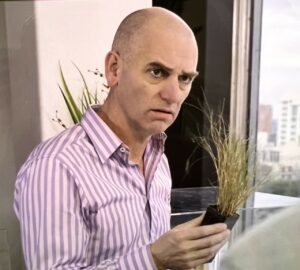
Well if you are a fan of the TV show Utopia then you have!
In Season One, Episode Two, of the satirical program, it is this grass species which runs the risk of balting a $2 billion port development in Victoria.
Other than confusing the team about what a perennial plant is, why its special and to make matters worse, when the team try and bring together a working group on how to handle a threatened species, a cast of thousands arrives!
At Glenelg Hopkins CMA we can completely appreciate the irony that we are actually working with a plant that has been part of such a show, because it often pokes fun at Government process. But also, what great PR for our favourite saline loving grass!
